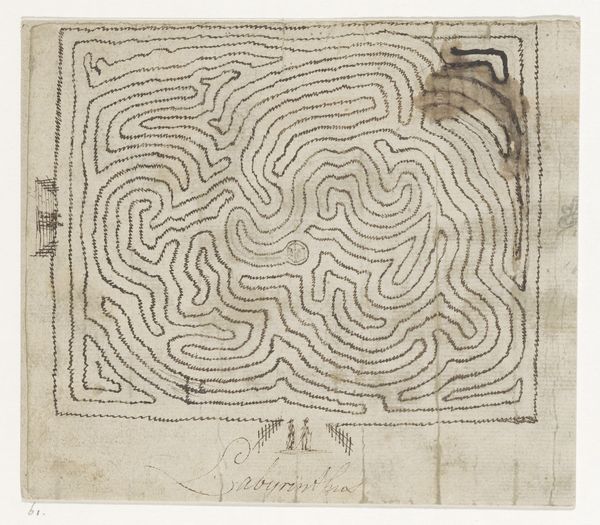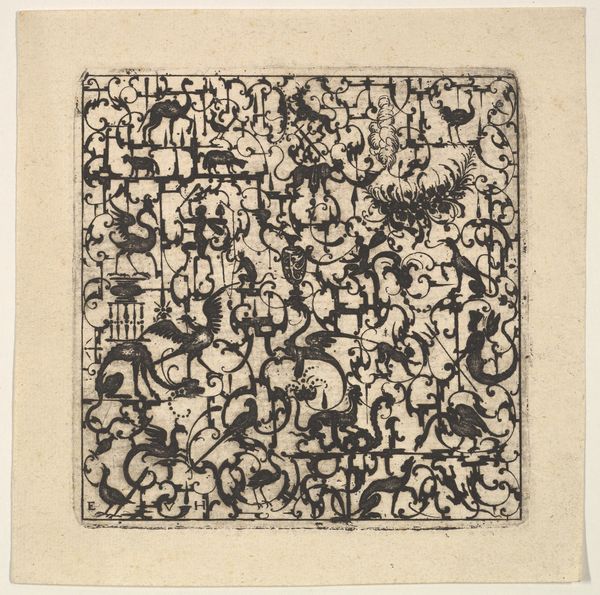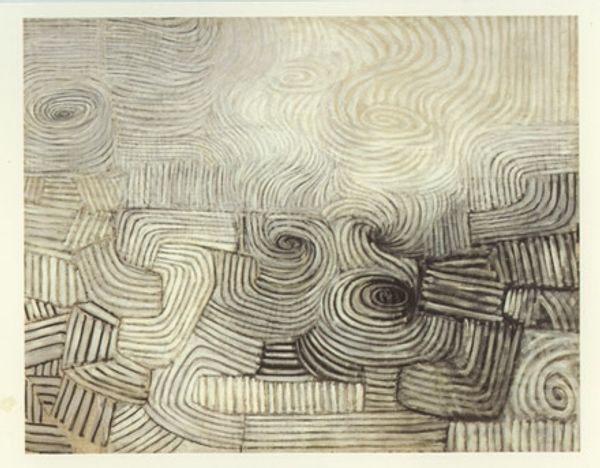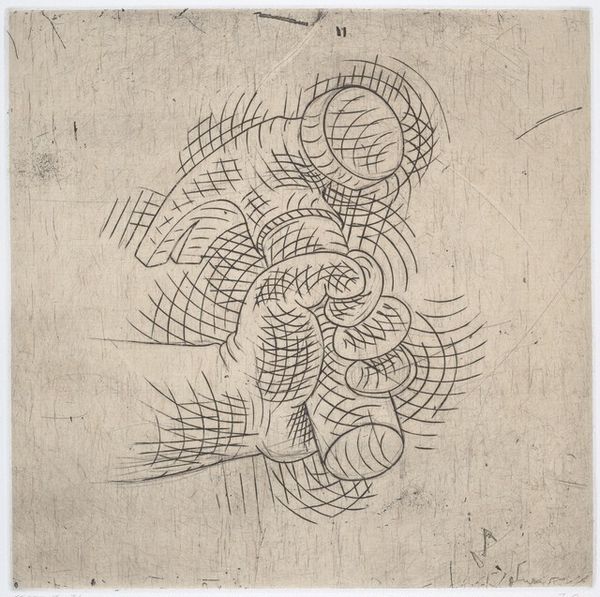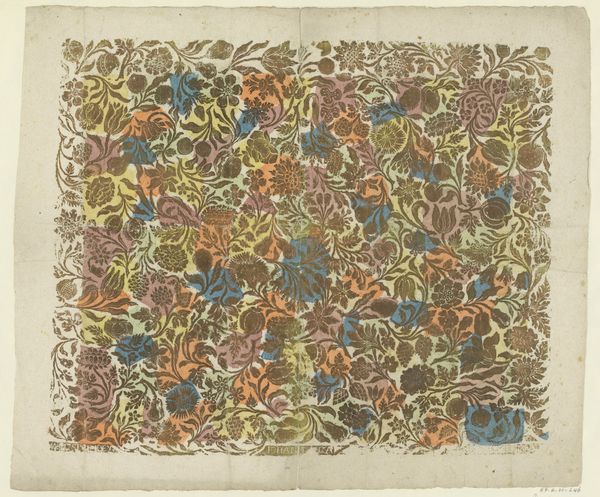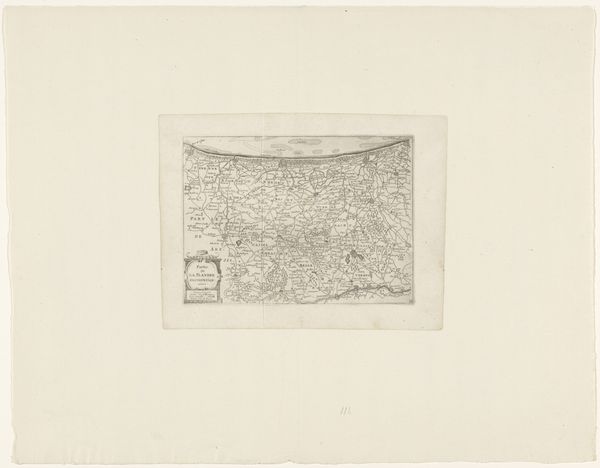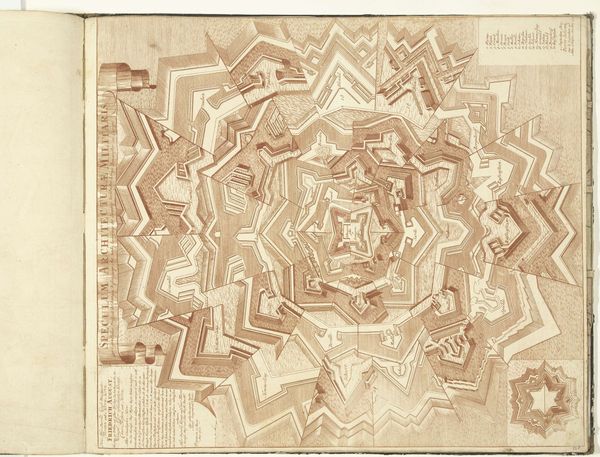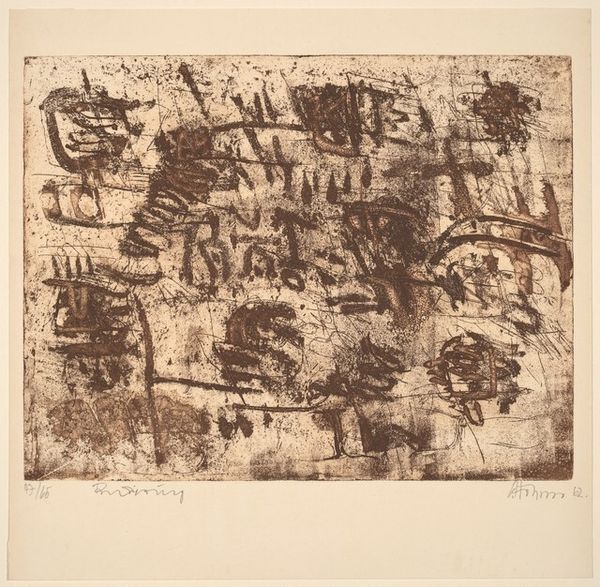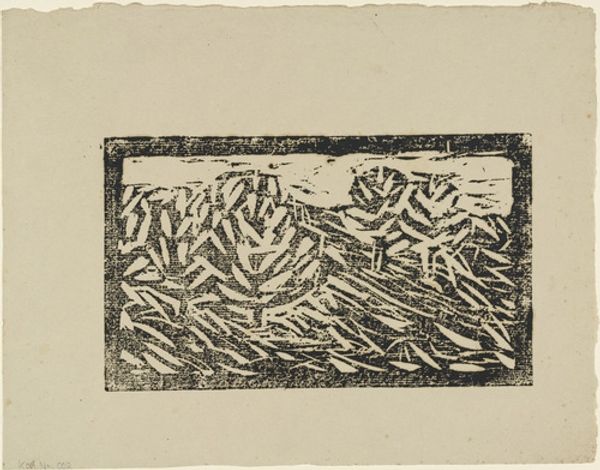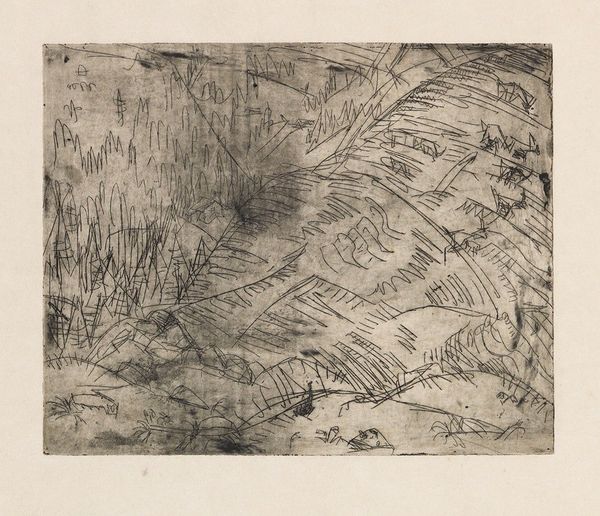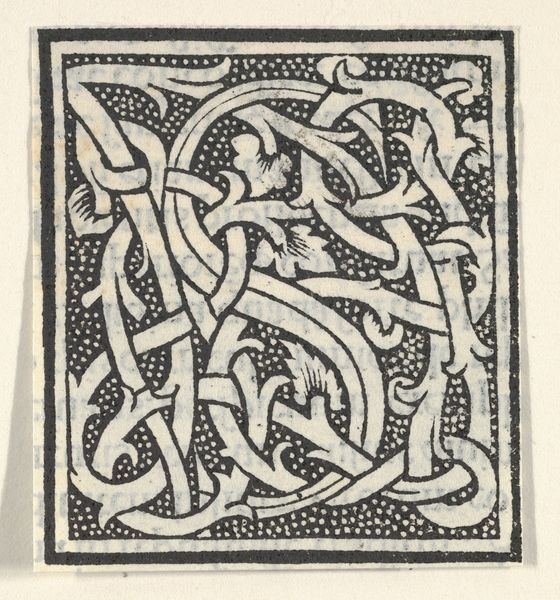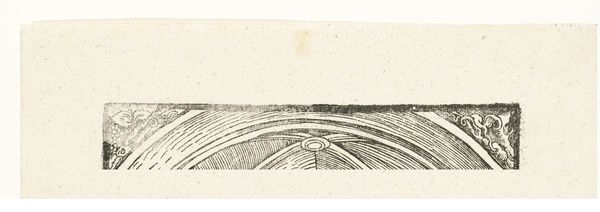
drawing, print, linocut, pen, engraving
#
drawing
#
medieval
# print
#
linocut
#
linocut print
#
organic pattern
#
geometric
#
geometric-abstraction
#
abstraction
#
line
#
pen
#
engraving
Dimensions: height 134 mm, width 143 mm
Copyright: Rijks Museum: Open Domain
Curator: This artwork, titled "Labyrint," is attributed to Jan Brandes and dates roughly from 1770 to 1808. The medium appears to be a drawing, possibly an engraving or a linocut print. Editor: The texture immediately grabs me. That irregular line, almost vibrating across the page, evokes a feeling of anxious searching, doesn’t it? The off-white color makes it appear aged. Curator: Indeed. It's interesting to consider the historical context. The late 18th century was a period of intense social and political upheaval. One could interpret this labyrinth as a visual metaphor for the complexities and uncertainties of the era. The French Revolution cast a long shadow. Editor: Absolutely. Mazes and labyrinths are potent symbols. They speak to our innate human desire for order and the simultaneous fear of disorientation. The single path leading to the center, often fraught with dead ends, symbolizes a quest, a journey of self-discovery fraught with challenges. This could certainly represent a quest during this turbulent time. Curator: I agree. And note how the labyrinth isn’t perfectly symmetrical. Its irregularities contribute to a sense of unease. Brandes, or whomever created this, likely engaged with the philosophical discourse around the role of reason and chaos within European society, too. Editor: Right. And let’s not forget the religious significance, either. In many cultures, the labyrinth represents a pilgrimage, a spiritual journey. Think of the Chartres Cathedral labyrinth. There is also the sense of hidden knowledge to be divined at its center. Curator: Which leads me to consider the institutional setting in which this image might have been circulated. Was it produced for a wealthy patron or circulated in printed form to a wider audience as commentary? It could be something made as part of a more formal printmaking workshop for distribution across Dutch society? Editor: That’s very true. Even without a defined historical path, this work’s emotional message seems deeply familiar and accessible. What a strange artifact of time that allows us to experience what the original crafter had in mind, the psychological anxiety of exploring new space. Curator: Indeed, it reflects a profound, human concern with order, disorientation, and the search for meaning amidst uncertainty—an image resonant for any period of change. Editor: I agree. Thanks to Brandes’ careful etching and organic shape, we're reminded how ancient and archetypal is that impulse for making visual pathways.
Comments
No comments
Be the first to comment and join the conversation on the ultimate creative platform.

